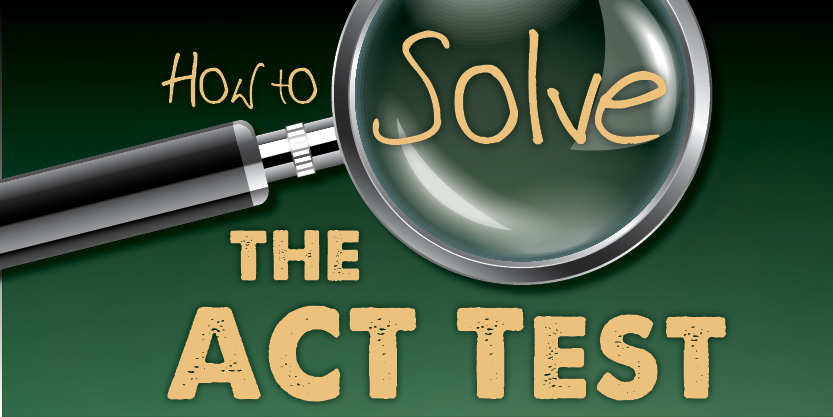How to Solve the ACT Test
 By: Winni van Gessel
By: Winni van Gessel
“Dad, what is the difference between who and whom?” I had answered these types of questions since my daughters learned to talk, but this time it was different – a lot of money was at stake.
And my answer might even determine if my children were accepted by a top college.
The question above appears in every ACT and most students do not know the answer. (Here is a hint: If you answer a question with HIM, you should have used WHOM.)
Born in the Netherlands, I was at first unfamiliar with the concepts of the ACT, and I was sure that my daughters’ activities, volunteer hours and leadership positions would lead to great scholarships.
Little did I know how much emphasis colleges place on the ACT. At UK a one-point difference (just 6 questions) can automatically increase your scholarship by $4,500. At Murray State, it can save you $7,500.
As an educator for 25 years, I knew about testing and decided to analyze every question that my oldest daughter missed. I found my first pattern: she missed four out of five circle questions. “I know. I hate cylinder problems,” she said.
That day, we drove to Cincinnati, and before we were even halfway I had taught her every circle formula, forwards and backwards. Back home, she breezed over her previously-missed circle questions and nailed every one of them.
By the time my youngest daughter was a junior, I had built up an extensive set of skills pertaining to the ACT, and I took every test that she took as well. I made one-page handouts and mini quizzes for every area in which she and her friends needed help.
“Can you make me a page that contains every math formula that I will need on the ACT?” she asked innocently. Soon this handout was known as “The Beast” and made its way to Morehead State University and even India.
By now, I had become a full-time college planner as one of the owners of “Class 101” in Lexington. I took every ACT that I could find and discovered more and more patterns that I organized in my own system, called trendsheets.
Currently, if a student takes a test, my trendsheets reveal within minutes of completion where they made their mistakes. The ACT is a standardized test, and each version is similar – therefore predictable.
Most of my students can improve their scores three points or more. My trendsheets help them focus on precise areas of study instead of the daunting task of working on EVERYTHING.
Now that both my girls are in college, I have put all the handouts, quizzes and trendsheets in a book, appropriately called “Analyze Your ACT.”
It took me two years to complete an overview that covers every aspect of the test: how to be a better reader, how to avoid mistakes in graphs and tables, and even how to get the area of an equilateral triangle ( 1/2 S*1/2 S*√3).
Now all parents can work with their child on test-taking skills, grammar rules and math formulas, and analyze a student’s ACT. Most importantly, each student can increase his or her score by focusing on one area at a time with 1-page handouts and 1-page quizzes.
I wish the best of luck to those for WHOM this book is written.
Winni van Gessel brings 25 years of teaching experience to “Class 101,” an independent, nationwide college planning business headquartered in Lexington. Class 101 helps families save on tuition costs. The company helps students improve their ACT/SAT test scores, enhance their essays and offers advice about majors and colleges. Info: www.myclass101.com

